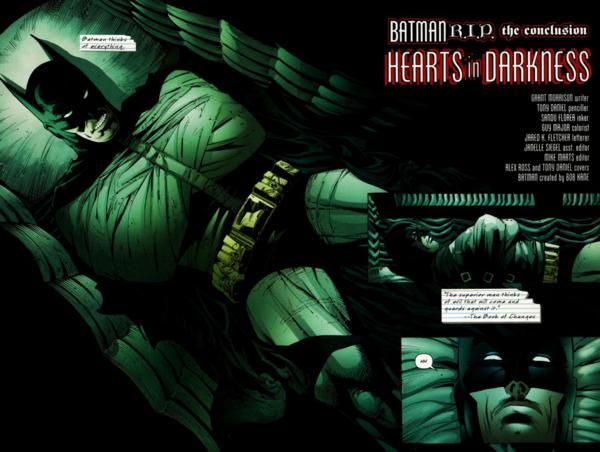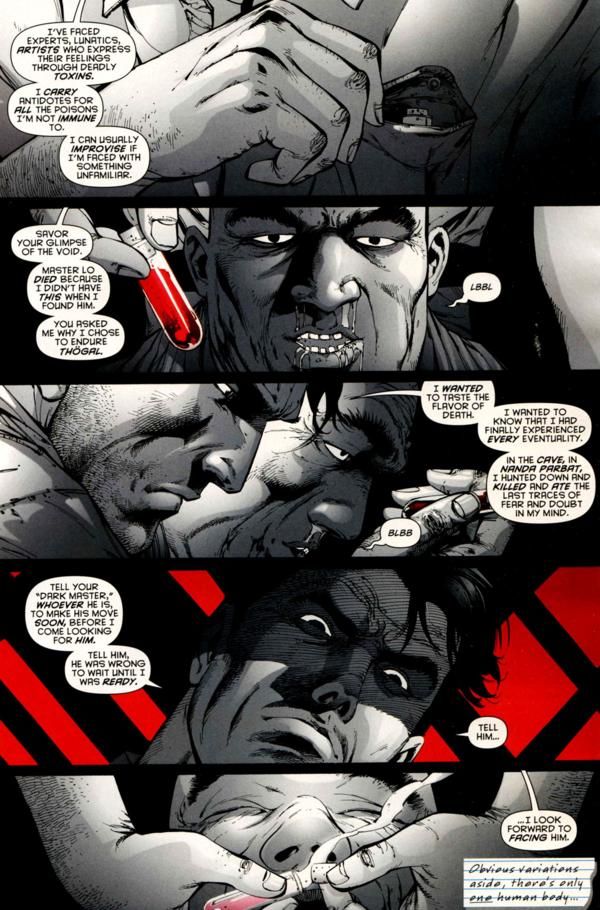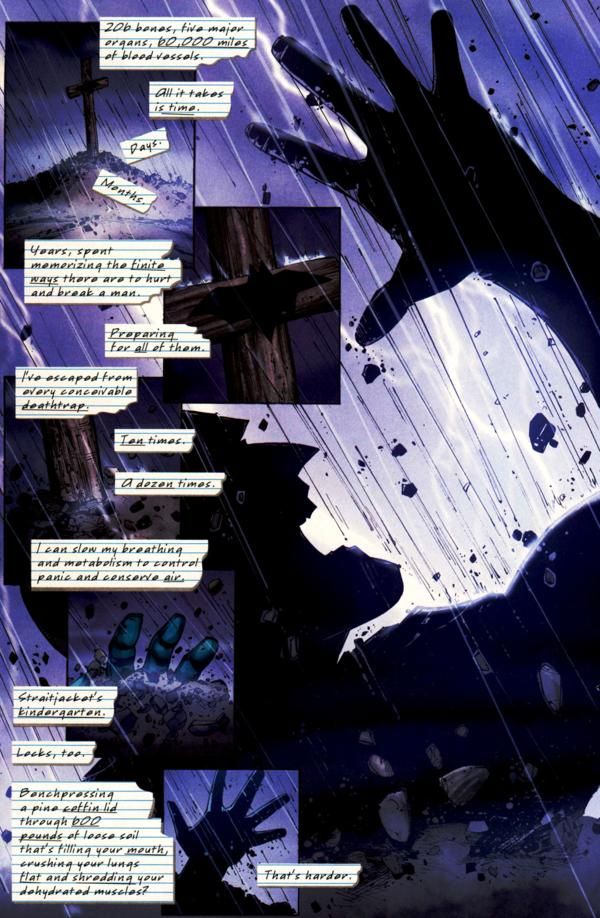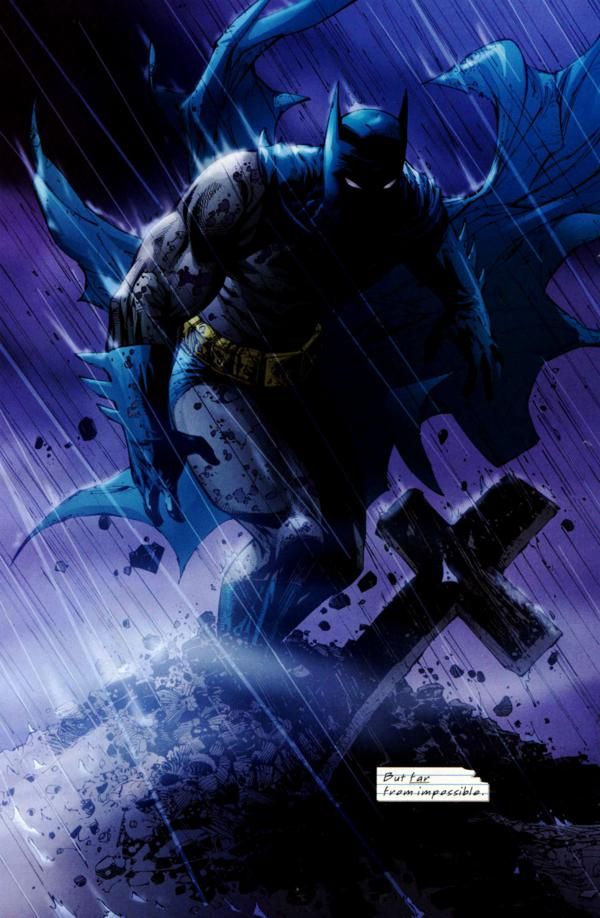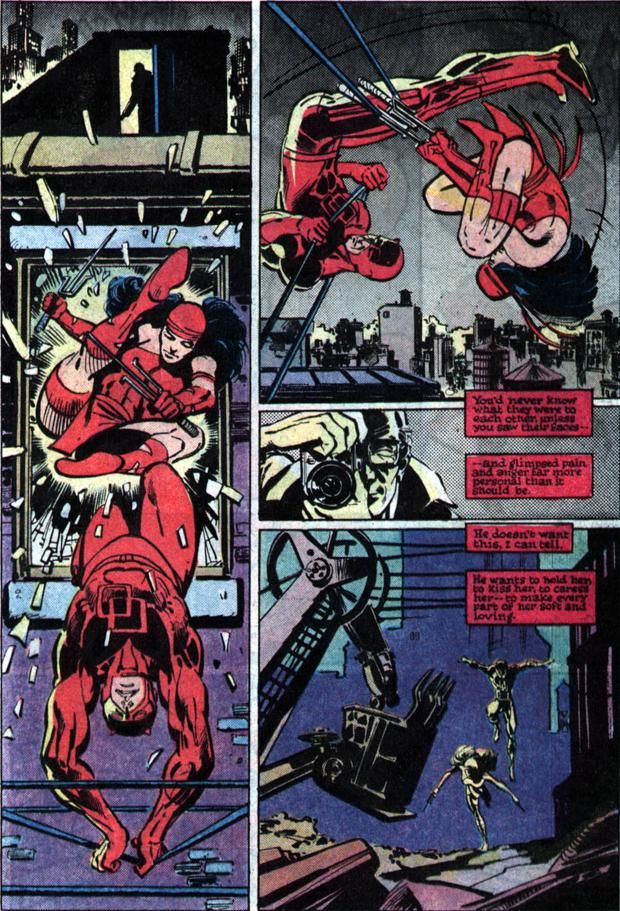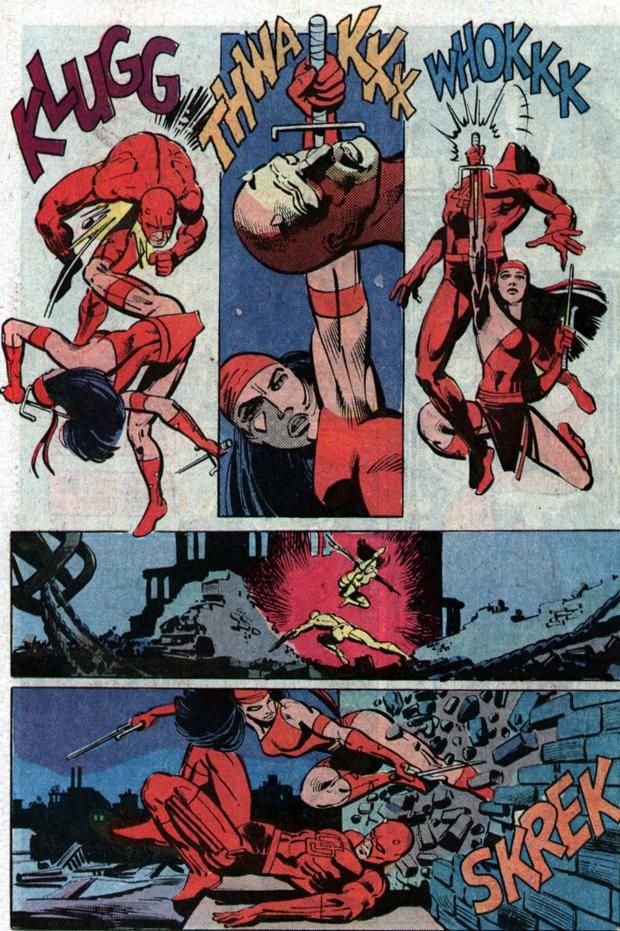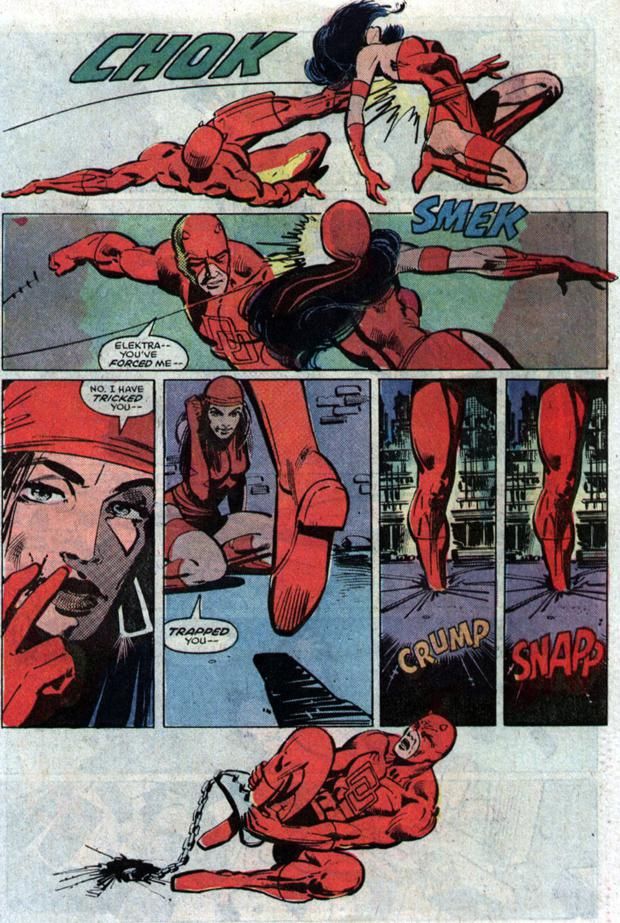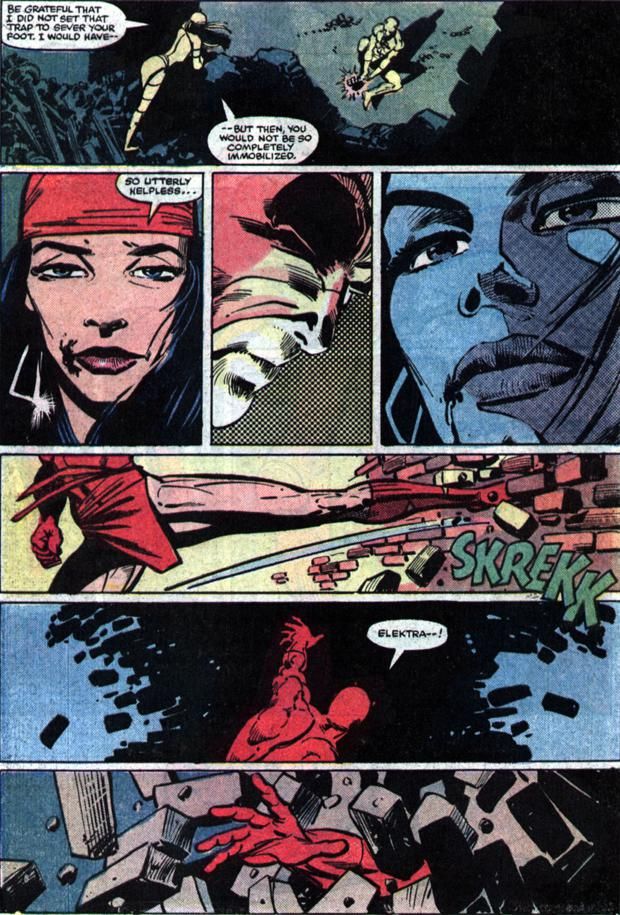You voted, now here are the results of your votes for your favorite comic book creator runs of all-time! We'll be revealing two runs a day for the rest of the month. Here is a master list of all of the runs revealed so far.
Here's the next two runs...
8. Grant Morrison’s Batman – 830 points (27 first place votes)
Batman #655-658, 663-683, 700-702, Batman and Robin #1-16, Batman: The Return of Bruce Wayne #1-6, Batman Inc. (Vol. 1) #1-8, Batman Inc. (Vol. 2) #1-current (#4) plus a few one-shots mixed in there, like Leviathan, Batman: The Return and Batman Inc. #0
If there's an overarching theme from Grant Morrison's epic Batman run (which is almost coming to a finish after nearly seven years on the title) it is the concept of "everything happened," the idea that all of the stories that Batman has gone through over the years have actually happened to him, so how does one deal with such an outrageous backstory?
The first example of this came in Morrison's first storyline, where the once out-of-continuity Son of the Demon graphic novel (where Talia Al Ghul appears to bear Batman's child) suddenly became IN continuity, as Morrison introduces their progeny as Damian Wayne, Batman's son. A child torn between an assassin mother and a superhero father. Damian has clearly become the break out character of Morrison's run.
Morrison continued the "everything happened" theme in the finale of the first chapter of his run on Batman, Batman R.I.P. where he introduces the theory that if everything that had happened to Batman really happened to somebody, they'd be insane, right? And in Batman R.I.P., Batman indeed appears to go insane, driven there by the evil organization known as the Black Glove. However, that's the thing about Batman...
Yep, Batman had been preparing for the Black Glove for months, all the way back to when Batman's life was threatened by the Black Glove's agents...
Awesome.
This first chapter of Morrison's run came to an end with Final Crisis, where Batman is captured by Darkseid and is attempted be cloned to form an army of Batmen for Darkseid. Here, though, Morrison explicitly shows us that yes, all of Batman's life experiences WOULD drive someone insane...unless they actually WERE Batman. That his ability to deal with all of this stuff is basically HIS superpower. After Batman stops Darkseid's plans, Darkseid gets revenge by blasting Batman back to the Stone Age and using one of the dead clones to trick people into thinking Batman was dead.
With Batman now seemingly dead, we enter the second chapter of Morrison's run, where he launches a new Batman series called Batman and Robin, where Dick Grayson takes over as Batman and Damian becomes the new Robin. Unlike the original idea of Batman being the dark character and Robin the light one, this new duo has the opposite dynamic. After a nice stint of cool superhero stories, Bruce returns in the Return of Bruce Wayne mini-series (where we learn that Batman is finding a way to return to his own time, but in doing so, he might be doing exactly what Darkseid wants).
His return leads to the final chapter of Morrison's run, which is ongoing. Batman decides that he needs to basically form an army of Batmen, so he does so, calling the idea Batman Incorporated. This is basically an extended riff over the old Batman concept of the International League of Batmen (something Morrison had used early in his run). Batman saw a glimpse of the future in his return to the present, and he realized he needed an army to stop the evil Leviathan, who turns out to be someone very close to Bruce Wayne.
During Morrison's run, the artists on his run have mostly been Andy Kubert (who launched the run with him), Tony Daniel (who did Batman R.I.P.), Frank Quitely (who launched Batman and Robin), Yanick Paquette (Who launched Batman Inc.) and Chris Burnham (who finished the first volume of Batman Inc. and launched the current series). He had a bunch of other great artists mixed in for arcs or single issues, though, including J.H. Williams III, Frazer Irving, Cameron Stewart, Chris Sprouse, Ryan Sook, a veritable smorgasbord of good artists (and, okay, there have been some bad ones mixed in, as well. We won't name names there).
Morrison's run is due to end in a little under a year. What a ride it has been!
7. Frank Miller and Klaus Janson's Daredevil – 838 points (17 first place votes)
Daredevil #158-161, 163-167 (Frank Miller as artist, with Klaus Janson inks), #168-176 (Miller as writer/artist, with Janson as inker), 177-184 (Miller as writer/co-artist with Klaus Janson), #185-190 (Miller as writer, with Janson as artist), #191 (Miller as writer/artist, no Janson as inker)
Frank Miller was already an up and coming artist when he took over the penciling duties on Daredevil, under writer Roger McKenzie, with the book's inker, Klaus Janson, staying on to give the book some continuity between departing artist, Gene Colan, and Miller. Soon, the book began to get a buzz around it due to Miller and Janson's impressive artwork, which managed to give a totally different look to the book despite McKenzie's fairly standard plots (not that McKenzie was bad, just that his style did not necessarily match the style Miller and Janson were going for). The book soon became popular enough that Miller was promoted to the writer of the book, as well.
His first issue dramatically changed Daredevil, especially the introduction of Matt Murdock's college love, Elektra, who was now an assassin.
Another change in Miller's run was that Daredevil was now a lot more like a ninja than ever before, including introducing Stick, the man who mentored Murdock in the ways of being a ninja.
Notable during this time was the fact that Miller and Janson were absolutely amazing on the artwork on the book. They were bringing in a Will Eisner/manga look (specifically Lone Wolf and Cub) that was quite striking. Especially on the action sequences. SO gorgeous. Check out this sequence of Daredevil and Elektra in battle over the life of reporter Ben Urich (who became a major supporting character during Miller's run, as Urich figured out that Matt Murdock is Daredevil)...
The Kingpin became a major Daredevil villain during Miller's run (soon into Miller's run, by the way, the book went from bi-monthly to monthly, a sign that the book was becoming popular again). Towards the end of his run, Miller had Bullseye (a character Miller used to great effect during his run) kill off Elektra.
After a few more issues (Janson was totally drawing the book by this time), Miller left with one fairly depressing issue (with inks by Terry Austin).
Marvel has nicely collected Miller's entire run into three trades, and they smartly split the trades into Vol.1 (only Miller art) and Vols. 2 and 3 (Miller as writer).

